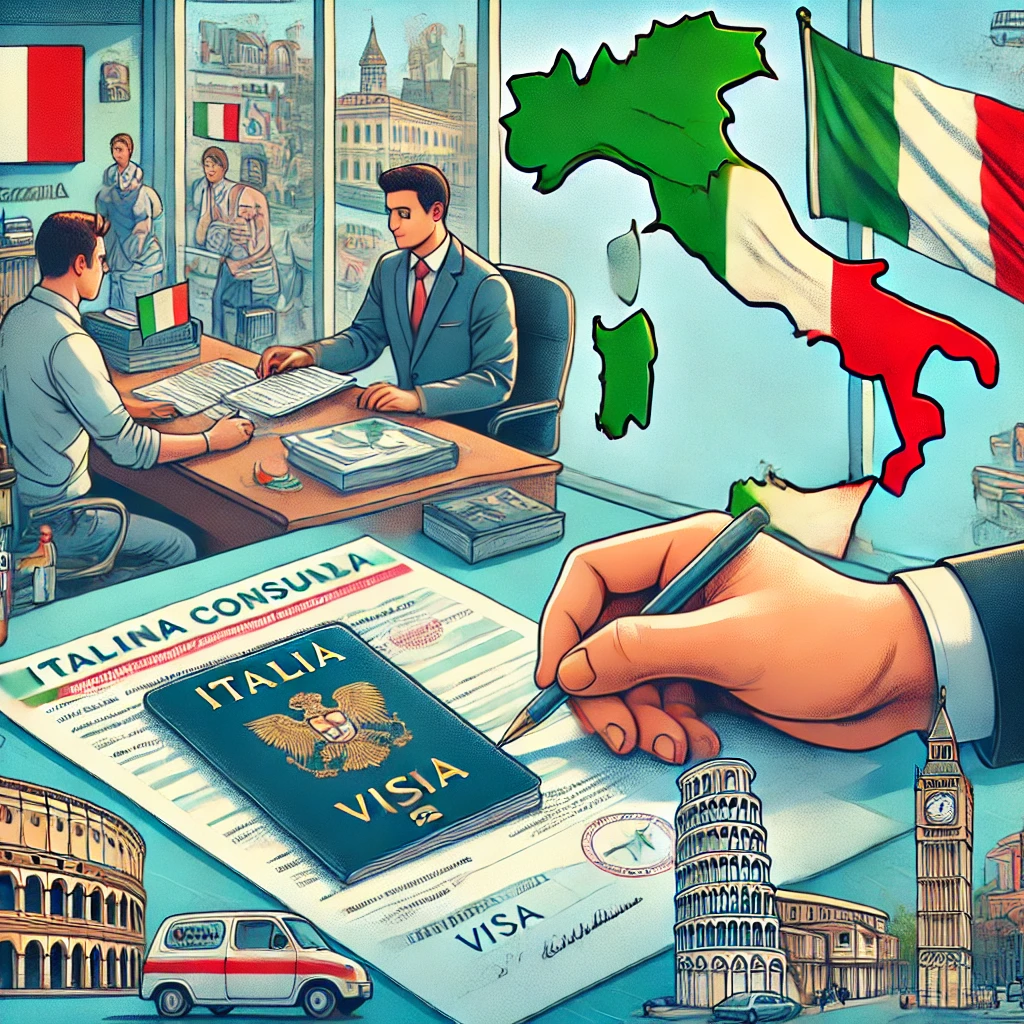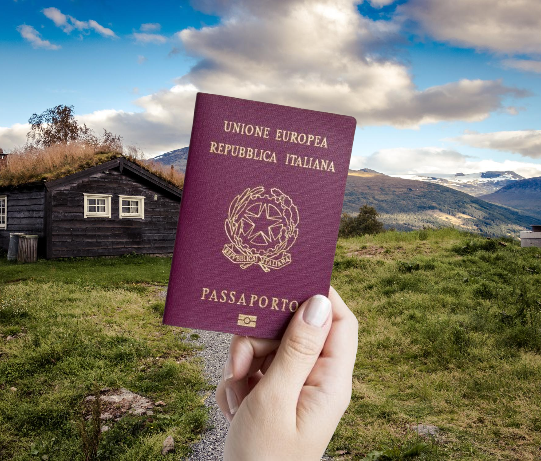The Italian Domestic Work Visa is designed for non-EU citizens offered employment as domestic workers in Italy. Domestic work includes roles such as caregivers, housekeepers, nannies, gardeners, and cooks. This visa enables foreign nationals to legally reside and work in Italy for a specified period, typically matching the duration of their employment contract. Below is a comprehensive guide on eligibility, the application process, and essential tips for securing this visa.
Eligibility for the Italian Domestic Work Visa
To be eligible for the Domestic Work Visa Italy, both the employer and the employee must meet specific requirements:
| Employer: | Employee: |
| Must be an Italian citizen or a citizen of another EU member state. | Must be a citizen of a non-EU country. |
| Must be relocating to Italy or residing in Italy. | Must have a valid passport. |
| Must have a genuine need for a domestic worker. | Must have a clean criminal record. |
| Must offer suitable accommodation for the worker in Italy. | Must be in good health, as evidenced by a medical certificate. |
| Must provide a valid employment contract that adheres to Italian labor laws. | Must have a basic understanding of the Italian language and culture (if applicable). |
The Application Process for Italian Domestic Visa
Before you begin your visa application, make sure you have all of your paperwork available. When not fully prepared, the procedure can get rather overwhelming. So, let’s go over the steps you need to take to apply for a domestic visa successfully.
Initially, the employer must get a “Nulla Osta” (Certificate of No Impediment) from the Sportello Unico per l’Immigrazione (SUI) in Italy. This certificate indicates that there are no legal hurdles to hiring a foreign worker. The employer might start this process online or in person.
Once the “Nulla Osta” has been issued, the potential employee may apply for a Domestic Work Visa at the Italian consulate or embassy in their native country. They must provide all necessary documentation, including a copy of the “Nulla Osta,” a valid passport, a completed visa application form, an employment contract, and other supporting documents.
After the visa is approved, the worker you are free to enter Italy. Yet, don’t forget to register with the local authorities within eight days of arrival.
And that’s it! Your final step involves applying for a residence permit (Permesso di Soggiorno) at the local Questura (Police Headquarters). The residence permit is typically valid for the same duration as the employment contract.


Online Application vs. In-Person
Even in this digital age, not everything works fully online. While applying for “Nulla Osta” online offers convenience, the entry visa application process usually requires an in-person appointment at the Italian consulate or embassy. Make sure to verify the specific requirements of the consulate in the employee’s home country to ensure a smooth application process. It’s recommended to speak to the embassy representative.
Required Documents
Now for the most crucial part: documentation. The documentation necessary for an Italian Domestic Work Visa application generally differs depending on the unique circumstances and the consulate or embassy. However, you’ll typically need the following documents:
| Employer: | Employee: |
| Proof of Italian or EU citizenship (passport or ID card) | Valid passport |
| Employment contract with the worker | Copy of the “Nulla Osta” |
| Proof of suitable accommodation for the worker in Italy | Employment contract with the employer |
| Proof of financial means to support the worker’s salary | Medical certificate |
| Criminal record check from the home country | |
| Proof of Italian language proficiency (if applicable) |
After Arrival in Italy
Arrived in Italy and should take the following steps? So, first and foremost, register with the municipal authorities (comune). This must be completed within eight days after entering Italy.
Fill out the application for a permit of residency in Italy (Permesso di Soggiorno) so that you can live and work legally in Italy.
Finally, sign an integration agreement (if appropriate) outlining the worker’s commitment to studying Italian and integrating into Italian society.
EU Citizens and Non-EU Family Members
If you’re an EU citizen or a non-EU family member of an EU citizen planning to move to Italy, it’s important to understand the specific requirements and steps involved. This ensures a smooth transition and compliance with local regulations. So, let’s have a quick look at what you need to know:
For EU Citizens:
- Register Residence
Register with the local Anagrafe if staying longer than three months.
- Tax and Social Security
Understand Italian tax obligations and social security contributions.
- Health Insurance
Obtain a European Health Insurance Card (EHIC) and register with the Italian National Health Service (SSN).
For Non-EU Family Members:
- Family Reunification Visa
Obtain a family reunification visa from the Italian consulate before traveling, if required.
- Residence Permit
Apply for a residence permit within 8 days of arrival in Italy.
- Documentation
Provide proof of relationship, EU citizen’s residence, financial stability, and health insurance.
- Healthcare and Social Security
Enroll in the SSN for healthcare and ensure social security contributions are in place.
Tips for a Successful Application for an Italian Domestic Visa
To increase your chances of a successful Italian Domestic Work Visa application, consider these tips:
- First of all, make sure to start the application process early. Generally, the process can take several weeks or even months, so having extra time is always a good idea.
- Ensure you have all the necessary documents ready. Make sure they are complete, accurate, and up-to-date.
- Provide proof of a genuine employment relationship between the employer and the employee.
- Demonstrate a strong commitment to integrating into Italian society by learning the language and understanding the culture.
- Seek guidance from an immigration lawyer or advisor if you have any questions or concerns.
Wrapping Up
Applying for the Italian Domestic Work Visa involves meeting specific requirements and following a detailed application process. By ensuring that all criteria are met and necessary documents are prepared, prospective domestic workers and their employers can navigate the process more smoothly. For personalized advice and assistance, consider seeking help from an immigration professional.
For more informations consider reading our articles about path to residency, Italian freelancer visa, Digital Nomad Visa, Tips for Cover letter for Italian Visas and Italian Golden Visa.





This article really helped clarify the process for me. Thank you so much!
Great breakdown of the application process. I feel more confident now!
Congratulations on writing such an informative piece. It was exactly what I needed.
Thank you for explaining the eligibility requirements so clearly!
This guide made my application process so much smoother. Thanks a lot!
I appreciate the detailed information on the required documents. Very helpful!
Thank you for the step-by-step instructions. It made things so much easier.
Great tips for a successful application. I feel well-prepared now!
This article answered all my questions about the Italian Domestic Work Visa. Thank you!
Thank you for breaking down the differences between online and in-person applications!
I’m so glad I found this article before starting my application. It’s been a lifesaver!
The section on EU citizens and non-EU family members was super helpful. Thanks!
This article is a must-read for anyone applying for the Italian Domestic Work Visa. Thank you!
Thank you for providing such clear and concise information. Very much appreciated!
This article made the entire visa process feel much less daunting. Thank you!
I appreciate the tips for a successful application. I’m feeling much more confident now!
Thanks to this article, I now understand what I need to do after arriving in Italy. Very helpful!
The detailed breakdown of the application process was exactly what I was looking for. Thank you!
This article is incredibly informative. Thank you for sharing your knowledge!
The explanation of required documents was particularly useful. Thank you!
I’m so grateful for this guide. It made the visa process much more manageable.
This article helped me feel more prepared for my visa application. Thank you!
Thank you for providing such practical advice for a successful application!
I appreciate the thoroughness of this article. It really covers everything!
Thanks for the clear explanation of the online vs. in-person application options.
This article is a great resource for anyone applying for a domestic work visa in Italy. Thank you!
Thank you for the helpful tips on what to do after arriving in Italy.
I found the information on eligibility very useful. Thank you!
This article was a huge help as I prepared my visa application. Thanks!
Thank you for providing such a comprehensive guide. It was exactly what I needed!
Great job on this article! It really helped clarify the visa process for me.
I’m so glad I read this article before starting my application. Thank you!
The section on EU citizens and non-EU family members was really informative. Thanks!
Thank you for making the application process feel much more straightforward.
This article gave me the confidence I needed to start my application. Thank you!
I appreciate the detailed explanation of the required documents. Very helpful!
Thank you for the step-by-step guide. It made everything so much clearer.
This article was exactly what I was looking for. Thanks for sharing your expertise!
The tips for a successful application were especially useful. Thank you!